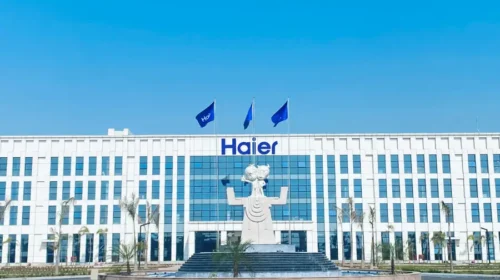A Shifting IPO Tide, and China Stocks Get Cold Shoulder in Europe

Chinese companies are increasingly choosing Hong Kong over New York for their offshore listings. And some of those same companies that have listed in Europe are finding a lack of interest
By Doug Young & Rene Vanguestaine
As the New Year unfolds, a noticeable shift is occurring in the landscape for offshore Chinese IPOs, with Hong Kong emerging as the preferred destination over New York. In the past year, 113 Chinese companies were approved for overseas listings by China’s securities regulator, evenly split between New York and Hong Kong. However, a deeper examination reveals most approvals for New York came in the first half of 2024, whereas Hong Kong maintained a more balanced distribution throughout the year. This trend continues into 2025, with over 70% of pending applications targeting Hong Kong.
Geopolitical factors play a significant role in this migration. There was a market perception last summer that companies were waiting for the U.S. election results before pursuing U.S. IPOs. While the election results have some impact on geopolitics, particularly concerning potential differences in trade policies, there’s been a general bipartisan consensus in the U.S. regarding China for the past two to three years. Therefore, geopolitics is a primary, but not necessarily drastically changing, factor.
The preference for Hong Kong is especially pronounced among consumer-oriented companies. There is a prevailing belief that Hong Kong investors possess a better understanding and appreciation of Chinese brands, which bolsters confidence in consumer sector IPOs. This familiarity translates into stronger investor support, making Hong Kong a more appealing choice for companies looking to tap into a market that genuinely comprehends the value and potential of their brands. This nuanced understanding of consumer preferences in Hong Kong contrasts sharply with the more generalized investor base in New York, where Chinese brands might not receive the same level of specialized attention.
The technology sector, traditionally favoring U.S. markets for higher valuations, is also witnessing a shift toward Hong Kong. While autonomous driving companies WeRide and Pony.ai had fairly successful U.S. IPOs last year, other companies may feel unprepared for the greater transparency and information disclosure requirements of a U.S. listing.
Especially for semiconductor companies, U.S. restrictions on technology transfer in the chip industry make a U.S. listing impractical. If these companies can’t access or raise sufficient capital in the domestic A-share market, Hong Kong becomes the default listing destination.
One could argue that Hesai might have told a different story, with an autonomous driving chip company successfully listing in the U.S. about two years ago. However, the environment was different at that point in time, and Hesai isn’t a pure chip company; it also provides devices and software. We wouldn’t expect the U.S. to be a destination of choice for pure Chinese chip makers for a long time.
Struggling Global Depository Receipt Program
Parallel to the trend of more IPOs in Hong Kong is China’s Global Depository Receipt (GDR) program, aimed at encouraging listings on European exchanges. Launched a few years ago, the program has struggled to gain traction. Under the program, China encourages companies listed on its domestic A-share markets in Shanghai and Shenzhen to list on several European exchanges. To date, it has signed agreements with major exchanges in Switzerland, Germany, and London. But only 20-some firms have listed on those three exchanges so far, led by 17 on the SIX Swiss Exchange. Additionally, no new companies listed GDRs in Europe last year.
Challenges such as language barriers, increased disclosure requirements, and insufficient institutional demand have hindered its progress. The complexity of publishing information in multiple languages adds unnecessary costs and administrative burdens for Chinese companies, making European listings less attractive compared to the more streamlined processes in Hong Kong. Moreover, geopolitical tensions, exacerbated by events like the Ukraine war and ongoing trade disputes, make European listings even less appealing for Chinese companies.
Historical attempts by American firms to establish secondary listings in Europe during the 1960s offer a cautionary tale. Many of these listings were short-lived, primarily driven by commercial interests rather than sustainable investor demand. During that time, some consumer firms believed listing on a European exchange would help them more quickly establish their brands locally. But most of them canceled the secondary listings due to the lack of interest from institutional investors.
Similarly, Chinese companies face the dilemma of balancing the costs and complexities of European listings against the benefits of accessing a relatively small and less liquid market compared to their domestic or Hong Kong-based investors. In the end, we saw many of the China GDRs converted back to ordinary shares.
A great example of the uphill battle this program is facing comes from CATL, the world’s biggest EV battery maker. CATL is already listed in Shenzhen and was reportedly planning a Swiss listing last year. But for reasons that were never given, it abandoned the plan and is now reportedly looking at Hong Kong.
The preference of CATL and other Chinese companies for Hong Kong is reinforced by the presence of global institutional investors who have established offices in the region, ensuring better liquidity and investor interest. In contrast, European markets lack the same level of institutional engagement, making them less viable for significant capital raising.
Another factor is that Hong Kong serves as a home market for all Mainland China companies. Institutional demand tends to be greatest in the home market for a listed company. Unless you are a very successful global company like Nokia once was, institutional demand outside the home market remains limited. In the mid-90s to the beginning of the 21st century, a majority of Nokia’s trading volume was in New York instead of Helsinki.
In conclusion, the strategic pivot of Chinese companies toward Hong Kong for their offshore IPOs reflects a confluence of geopolitical stability, market familiarity, and investor accessibility. Efforts to diversify listings through Europe’s GDR program continue to face substantial obstacles, but Hong Kong remains the de facto hub for Chinese firms seeking to navigate the complexities of international capital markets.
About China Inc
China Inc by Bamboo Works discusses the latest developments on Chinese companies listed in Hong Kong and the United States to drive informed decision-making for investors and others interested in this dynamic group of companies.
Subscribe to China Inc on your favorite app:







